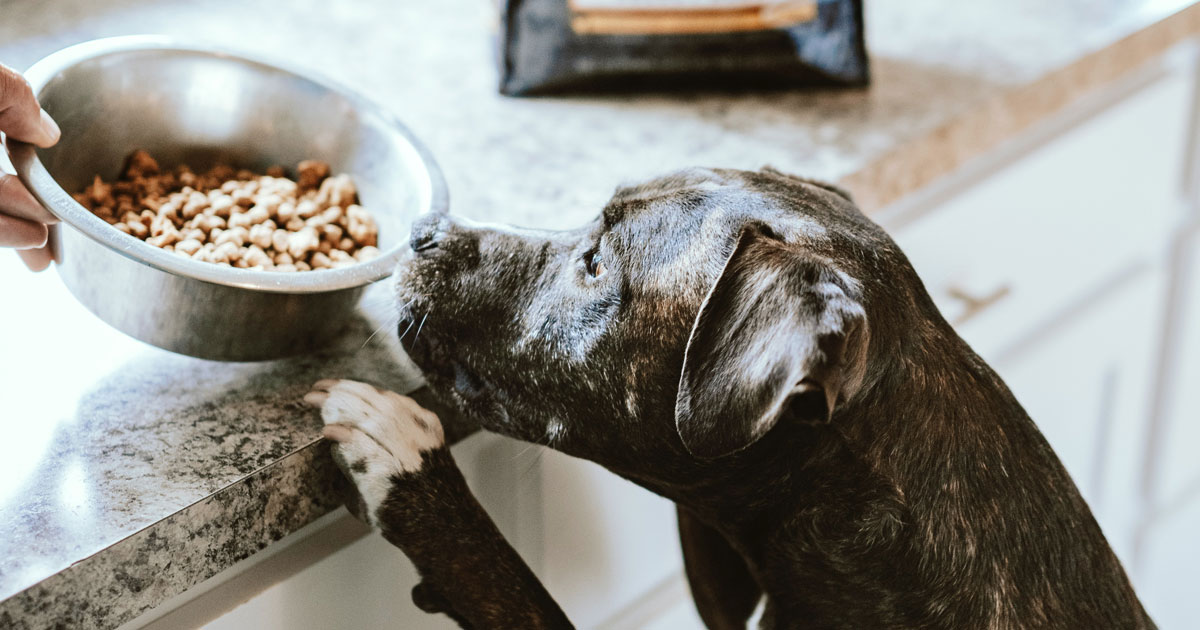A dog's breakfast is meant to mean something messy and disorganised but if you use it to mean you're feeding your happy dog, then it can be a great description for an effective website that's ready to enable you to throw Google an SEO bone.
Sit. Stay. Just give me a moment to unpack this analogy because at the heart of this article is an insight to help you understand how to approach building and using a website for your business.
This story involves:
- A dog food bowl (your website)
- Dog food (your content)
- A bone (your activity to let people and Google know you have good food available)
I've made more than 1,000 websites for small business people and organisations in my time, and I've catered for people of all sorts of budget and understandings and needs.
And I meet people who are just starting out in business or who have just decided to pay to get a site done properly, but then they ask, why aren't people visiting my site already?
If you're in this situation, please read on because we're going to fetch some ideas to get this into perspective.
This is particularly the case if you've decided to keep costs down by just having the most minimal content on your site to help you get started fast, before returning at some point in the future to develop better page content and blog articles.
Your website is the dog bowl
If you have pets you'll understand that pet food bowls can get pretty disgusting over time, especially if you're too busy to do proper cleaning.
The most important thing to understand when you take possession of your new website is that your website is like a brand new bowl.
At times like these, you're rightfully proud and excited and I bet you end up feeding your dog early, just to experience the joy as soon as possible.
But if you've simply arranged to have a good, solid site constructed without budget for good copywriting and a planned approach to blogging, then we need to remember that what we have is just the dog bowl.
Don't get me wrong. You need a good dog bowl. You don't want a cracked or broken bowl or one that is so badly constructed it might be better to just scatter your dog food on the ground.
A clean, solid dog bowl is mandatory.
We just need to be mindful that if we're going to have our dog enjoy the bowl as much as we do, we need to fill it with food.
Your website content is the dog food
You can imagine placing a new, clean bowl down on the ground and having your dog's natural curiosity draw it over to take a look and a sniff.
Likewise, when your site is published and your web developer connects it to Google Analytics and Google Search console, Google will become aware of your site and will amble over to take a look when it's ready.
But if Google only finds an empty bowl or just a few crumbs of words, it's going to be like a dog and lose interest quickly without making a note to return again.
I like this analogy on different levels.
Firstly, all dog food is not equal. I'm sure you know (or have heard of) pets that turn their noses up at certain brands and varieties of pet food. It's the same for humans (and Google) when it comes to crafting appetising content that makes a visit worth their while.
If you have wording that just talks about you (instead of sharing how your visitors can solve their problems or achieve new goals) or hints at helpfulness but ends up being short (or thin), you're going to have some wasted visits.
And remember, Google watches everything. It knows if your pages and blog posts tend to attract people in (perhaps due to clever headlines) but then they leave quickly. This does reputational harm for you in relation to SEO (Search Engine Optimisation).
Secondly, even the best food doesn't interest a dog if the dog is not hungry. Okay, there are always exceptions, but just because you crack open a new tin or packet of nice food, if the appetite is not there, there will be no interest or engagement.
I see this happen when people just "spew out" words that fill pages with, well, words. If you're content is not answering my questions or helping me, you could write in full Shakespearian prose and I'll drift away.
How do we get the appetite right? We think deeply and/or research the questions your ideal customers will be seeking answers for, from before they know you or your product/service exists, right through the spectrum of deciding between different products/services or different vendors, to how to get the most out of your product or service.
Do you see the difference here?
We're not getting any dog food action by just throwing "gunk" into the bowl. We need to carefully craft that "gunk" and make sure it aligns with different stops along the customer journey.
Now, let's throw Google an SEO bone
So, we have a shiny new bowl and some well chosen food for our beloved dog.
What happens if it didn't hear you serve up this feast?
Without thinking, you'd just call for your dog to come and eat.
It's similar with your website.
At its simplest, understanding how to throw Google an SEO bone, comes down to crafting and sharing content for particular audiences you have access to (or can buy access to).
If your website has a newsletter service connected, enabling you to stay in touch with visitors when you have new content to share, it's like having a prominent place for the dog food bowl and a robust routine that keeps your dog happy.
If you have connections with relevant groups of people who would love to support you (perhaps you are the member of some groups or a share a business space with a related business), ask if there is something relevant you could write and share for their audiences.
The great dilemma with SEO is people think you need to conquer the world. You don't. You just need to connect with your minimum viable audience. And if that can be done physically or simply, do it. Cut out the middle algorithms.
Alternatively, if you know of people who influence your "dogs" and who'd be happy to be interviewed or mentioned by you, that is a powerful way of using their reputation to "dog whistle" to bigger audiences.
Of course, there's also the use of your social media connections, via brand pages or your personal profiles; sharing your articles and web content with thoughtful captions can get you in front of people and pique their interest.
And if you do have content that's nicely written and HELPFUL, then it can be worth pushing it with a little Facebook or Google advertising because both of those services reward advertisers who offer people good content/experiences.
If you keep this analogy close to your inner motivations, you'll know that you'll build some loyal followers who keep your content "buried" in their thoughts so that when relevant situations arise they can dig it up and share it with others.
So, congratulations on getting the fundamentals right.
From here on in, keep that bowl clean (do the updates, maintain hosting, etc), plan to offer a good diet of attractive food, and use your wits (and planning) to keep tempting your networks and Google with juicy SEO bones.

